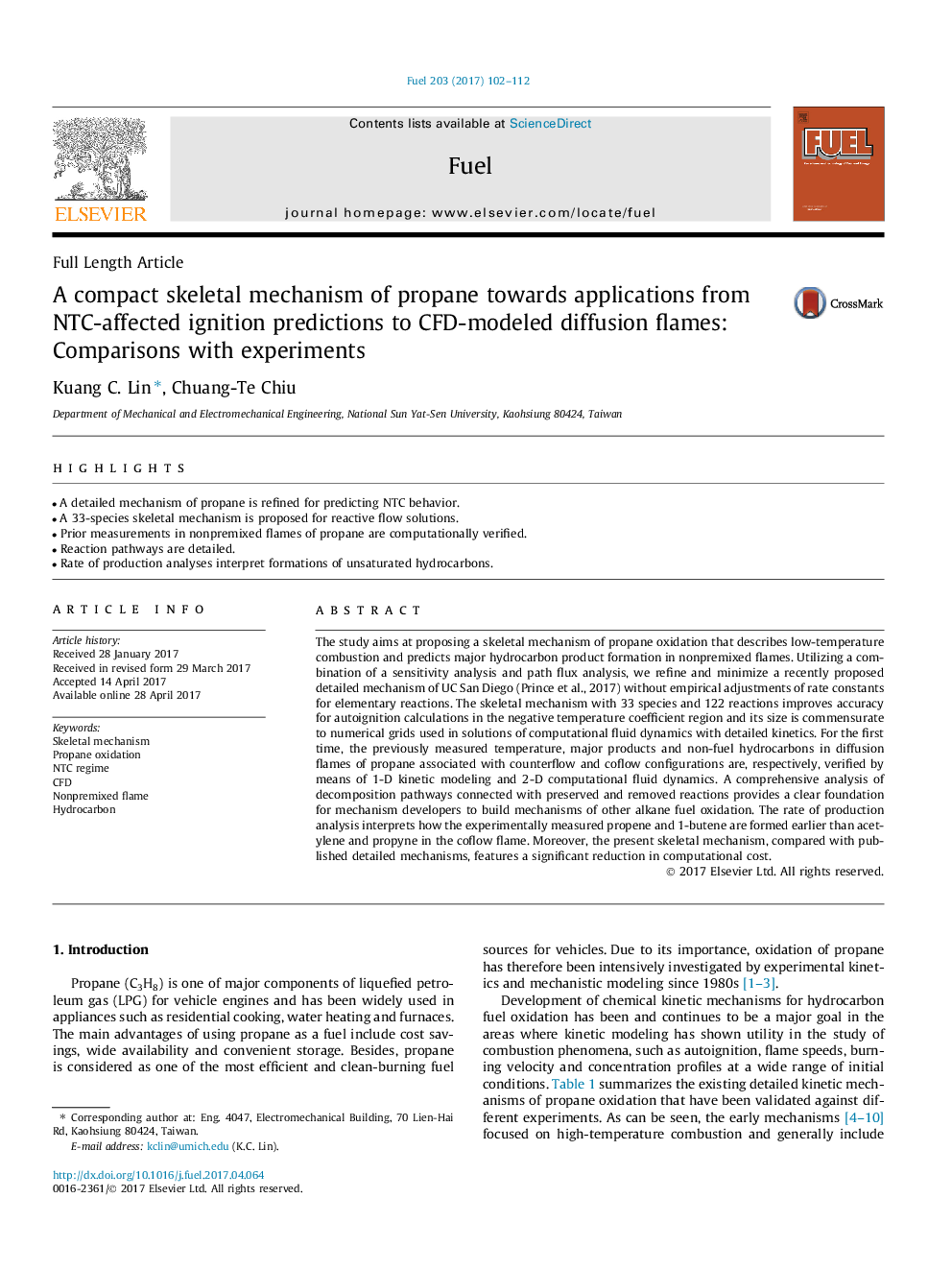| کد مقاله | کد نشریه | سال انتشار | مقاله انگلیسی | نسخه تمام متن |
|---|---|---|---|---|
| 6474268 | 1424961 | 2017 | 11 صفحه PDF | دانلود رایگان |

A detailed mechanism of propane is refined for predicting NTC behavior.A 33-species skeletal mechanism is proposed for reactive flow solutions.Prior measurements in nonpremixed flames of propane are computationally verified.Reaction pathways are detailed.Rate of production analyses interpret formations of unsaturated hydrocarbons.
The study aims at proposing a skeletal mechanism of propane oxidation that describes low-temperature combustion and predicts major hydrocarbon product formation in nonpremixed flames. Utilizing a combination of a sensitivity analysis and path flux analysis, we refine and minimize a recently proposed detailed mechanism of UC San Diego (Prince et al., 2017) without empirical adjustments of rate constants for elementary reactions. The skeletal mechanism with 33 species and 122 reactions improves accuracy for autoignition calculations in the negative temperature coefficient region and its size is commensurate to numerical grids used in solutions of computational fluid dynamics with detailed kinetics. For the first time, the previously measured temperature, major products and non-fuel hydrocarbons in diffusion flames of propane associated with counterflow and coflow configurations are, respectively, verified by means of 1-D kinetic modeling and 2-D computational fluid dynamics. A comprehensive analysis of decomposition pathways connected with preserved and removed reactions provides a clear foundation for mechanism developers to build mechanisms of other alkane fuel oxidation. The rate of production analysis interprets how the experimentally measured propene and 1-butene are formed earlier than acetylene and propyne in the coflow flame. Moreover, the present skeletal mechanism, compared with published detailed mechanisms, features a significant reduction in computational cost.
Journal: Fuel - Volume 203, 1 September 2017, Pages 102-112